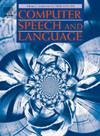准确的说话计数,拨号和分离先进的识别多通道多说话的谈话
IF 3.4
3区 计算机科学
Q2 COMPUTER SCIENCE, ARTIFICIAL INTELLIGENCE
引用次数: 0
摘要
本文旨在重点介绍多扬声器和多声道录音场景下远程语音自动识别领域的最新发展趋势和有效解决方案。本文主要基于我们在CHiME-8挑战任务1 (DASR)的广泛研究中获得的结果和经验,该任务旨在通过多个录音设备自动远程语音转录和拨号。我们的主要注意力集中在精心训练和调整的拨号管道和扬声器计数上。这使我们能够显著降低词形错误率(DER),并获得更可靠的语音分离和识别片段。为了提高源分离效果,我们设计了一种目标说话人引导提取(G-TSE)模型,并将其与传统的引导源分离(GSS)方法结合使用。为了训练管道的各个部分,我们研究了几种数据增强和生成技术,这些技术帮助我们提高了整体系统质量。本文章由计算机程序翻译,如有差异,请以英文原文为准。
Accurate speaker counting, diarization and separation for advanced recognition of multichannel multispeaker conversations
This paper aims at highlighting the recent trends and effective solutions in the field of automatic distant speech recognition in a multispeaker and multichannel recording scenario. The paper is mainly based on the results and experience obtained during our extensive research for CHiME-8 Challenge Task 1 (DASR) aimed at automatic distant speech transcription and diarization with multiple recording devices. Our main attention was paid to the carefully trained and tuned diarization pipeline and the speaker counting. This allowed us to significantly reduce the diarization error rate (DER) and obtain more reliable segments for speech separation and recognition. To improve source separation, we designed a Guided Target Speaker Extraction (G-TSE) model and used it in conjunction with the traditional Guided Source Separation (GSS) method. To train various parts of our pipeline, we investigated several data augmentation and generation techniques, which helped us improve the overall system quality.
求助全文
通过发布文献求助,成功后即可免费获取论文全文。
去求助
来源期刊

Computer Speech and Language
工程技术-计算机:人工智能
CiteScore
11.30
自引率
4.70%
发文量
80
审稿时长
22.9 weeks
期刊介绍:
Computer Speech & Language publishes reports of original research related to the recognition, understanding, production, coding and mining of speech and language.
The speech and language sciences have a long history, but it is only relatively recently that large-scale implementation of and experimentation with complex models of speech and language processing has become feasible. Such research is often carried out somewhat separately by practitioners of artificial intelligence, computer science, electronic engineering, information retrieval, linguistics, phonetics, or psychology.
 求助内容:
求助内容: 应助结果提醒方式:
应助结果提醒方式:


